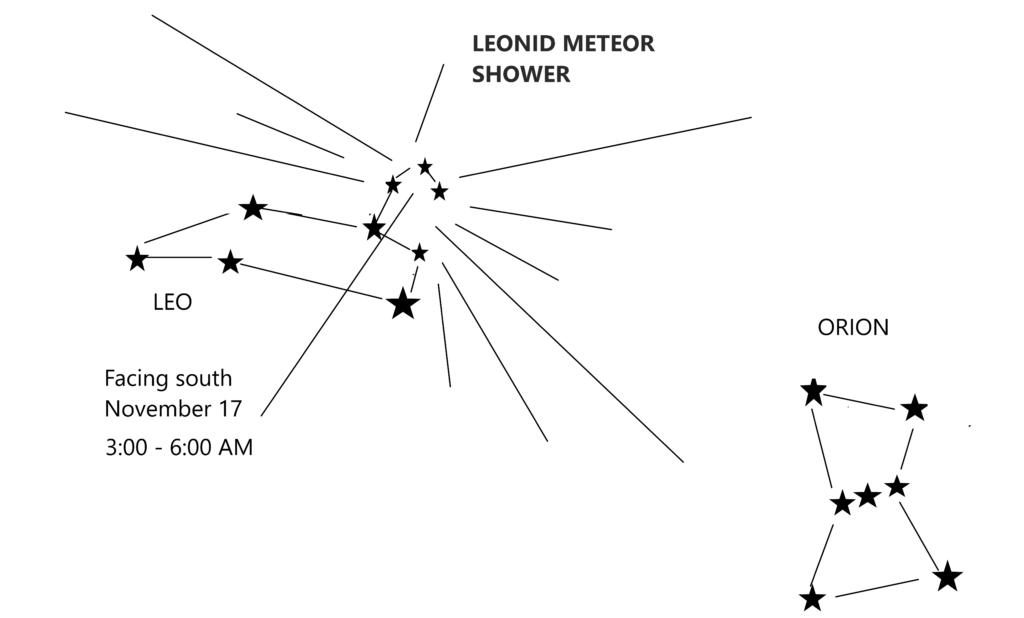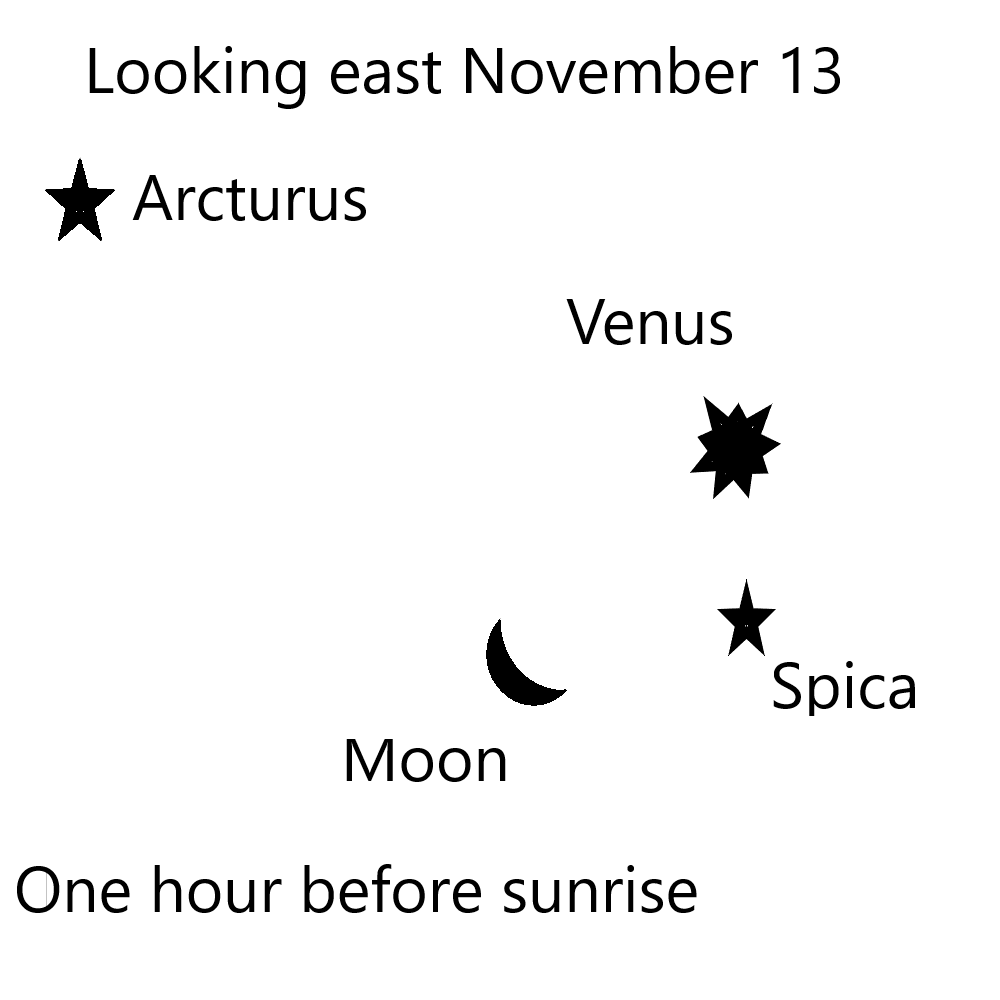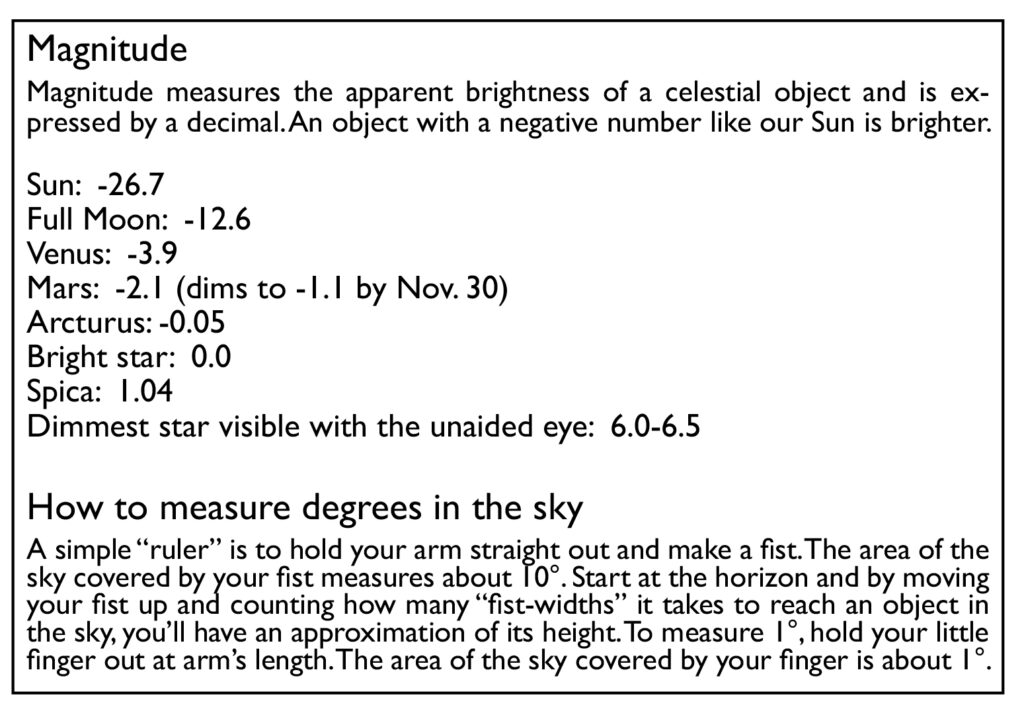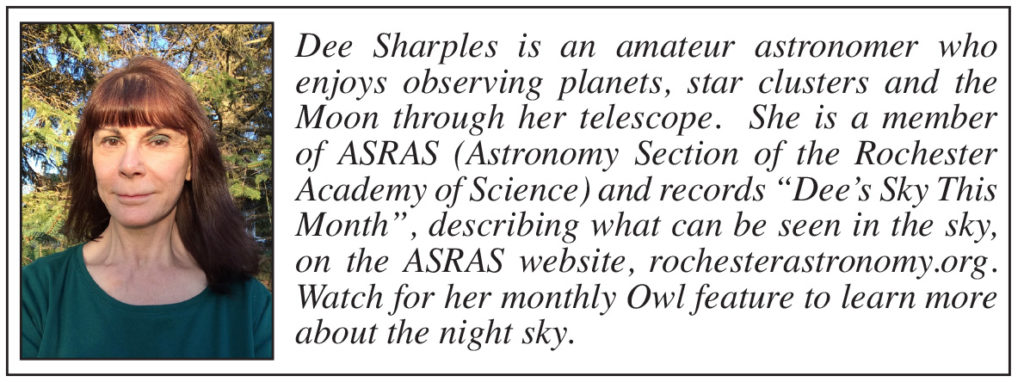The Night Sky: Leonid Meteor Shower, Orion the Hunter, and Venus
- By DEE SHARPLES-
November offers us the opportunity to witness one of the best meteor showers of the year. This month sporadic meteors from the Leonid meteor shower can be seen traveling across the night sky any time from November 6th – 30th with the peak occurring in the early morning hours of November 17. Astronomers predict there will be a rate of 15 meteors per hour between 3:00 to 6:00 AM this year.

Look south to see the distinctive constellation Orion the Hunter about 40 degrees above the horizon. To Orion’s left is the constellation Leo the Lion from which the meteors will appear to originate. These two constellations are a beautiful sight to observe all by themselves, but the view will be enhanced even more by seeing periodic Leonid meteors streaking past in every direction.
Light from the Moon won’t be a problem this year, but the ever-present threat of a cloudy night is always a possibility. If it’s predicted to be clear, set your alarm and head outside. Dress warm, grab a lawn chair, and find a spot to sit away from ambient lights and tall trees. Let your eyes casually roam the sky – meteors can suddenly appear in any direction and overhead.
A Leonid meteor is fast moving as it enters our atmosphere at 44 miles per second. The meteors are actually bits of small particles and debris left behind each time Comet 55P/Tempel-Tuttle passes through our solar system. The comet last visited us in 1998 and returns every 33 years. The next time will be in 2031. As the comet approaches the sun, some of its icy surface burns off, leaving a trail of dust and debris the size of grains of sand. Each year as Earth travels around the sun, it passes through these debris fields. The small particles enter our atmosphere and burn up creating a bright meteor.
There have been several years when Earth has experienced a Leonid meteor storm, not just a shower. In 2001, my husband and I headed out to our backyard at 4:15 AM on an unusually warm, clear November morning to get ready for the show. We were immediately delighted to see several meteors per minute streak across the sky! We even saw three fireballs, unusually bright meteors which left a trail of ionized gas. Around 6:00 AM when the sky began to brighten with dawn, the show ended. We were fortunate because it turned out to be the most active meteor shower in over 30 years, and actually was the first one I had ever observed.

The bright planet Mars will be high in the east an hour after the sun sets, looking like a distinctly reddish/orange star. It will be hard to miss as it shines at magnitude -2.1 in an area of sky devoid of any bright stars. Mars was closest to Earth on October 6th but as we get farther apart, its magnitude dims to -1.1 by the end of the month.
The dazzling planet Venus shining at magnitude -3.9 will be about 20 degrees above the eastern horizon an hour before sunrise. On November 13th, it will be joined by a thin crescent Moon below and to its left. This month two bright stars, Spica and Arcturus, will also be easy to spot in the morning sky before the sun rises.

